
Q. I am attempting to maintain a 30-gallon invertebrate aquarium. My biggest problem is hair algae! The aquarium has been set up for 15 months and was doing well for about 11 months. Then it came! Hair algae started taking over my live rock and smothering my corals.
I have four fluorescent tubes over the aquarium (two actinic and two daylight) and a trickle filter equipped to handle a 75-gallon aquarium. I also have a small internal protein skimmer. The bottom is covered with a thin layer of crushed coral and 40 pounds of live rock. I have six small fish and feed them daily. I also have mushroom polyps, zoanthids, a dying bubble coral and several tubeworms. I add liquid invert food once a week.
I recently added three turbo snails, but it had little impact on my lawn of green hair algae. I do 5-gallon water changes every six weeks using RO water. Please help me before my aquarium is filled with one big green hairball!
A. As a former aquarium store owner, I can assure you that you are not the only one with this problem. Microalgae is the reef aquarist's most formidable nemesis! In fact, I have seen more reef aquarists tear down their aquariums because of uncontrollable hair algae growth than for any other reason.
If an aquarium is not maintained properly, and in some cases even when it is, algae can run amok, choking out your corals and growing over your beautiful live rock. For you neophyte reefkeepers yet to experience this botanical nightmare, beware. It may take six months to a year before the big blooms come.
To understand how to control hair algae, it helps to know something about what algae needs in order to thrive. The most important factors affecting algae growth are light, oxygen, temperature and nutrients (e.g., phosphates, silicates, iron, dissolved organic compounds [DOCs]). It would seem logical that if we could limit these growth factors we could prevent undesirable algae from overrunning our aquariums.
However, many corals have some of the same requirements as these pestilent algae species because they maintain life-giving zooxanthellae (golden-brown diatoms — a microalgae) in their tissues. Although we cannot extinguish our lights and deplete oxygen levels without deleteriously effecting our corals, we can try to keep nutrient levels to a minimum and maintain our aquariums at a lower temperature (between 73 to 76 degrees Fahrenheit) to control microalgae growth.
The importance of excessive nutrients on algae growth and stony coral health became quite apparent to me on two recent dive trips. The first observation was made in a large bay in New Guinea, where I observed an abundance of Padina, a brown macroalgae that resembles a potato chip. The algae was growing over hard corals, such as staghorn coral (Acropora spp.), and was a conspicuous feature of the area.
According to a friend, the algae was not there the last time he visited the area. Since that visit, however, a palm oil plantation had been set up along the coast and fertilizer from this farm was running off into the bay.
Similarly, on a recent trip to Indonesia I observed that offshore reefs were devoid of algae, while a reef near the mainland that was adjacent to a fishing settlement and the raw sewage it purged, had large stands of macroalgae and few stony corals. I should point out that this inshore reef did have a rich assemblage of soft corals, which was clearly an indication that these animals may not be as sensitive to poor water quality as their reef-building relatives.
The question is, what kind of reef do we want to replicate in our aquariums? One that has an abundance of healthy hard corals, or one that supports lush algae stands? I hope most of you would agree that you would rather duplicate a healthy reef than an ailing one.
So that you don't start off on the wrong foot, it is important to fill your aquarium with deionized water to avoid nutrients that are often present in tap water. Deionized water should also be used to top-off your aquarium as water evaporates or when you do partial water changes.
When placing your live rock in the aquarium it is important to place it in a loose configuration that gives you (and your siphon hose) access to the mounds of sediment and detritus that will form between and behind the rock. It is also best to build your reef out of live rock. The coralline algae on the live rock will inhibit the growth of filamentous algae, as will some encrusting invertebrates. I have maintained aquariums that contained both lava rock and live rock, and the worst hair algae growth was always on the former.
An efficient protein skimmer is vitally important to help keep dissolved organics in check. Placing activated carbon in an external filter can also help pull some organics from the water, but be aware that a low-grade carbon can leach algae nutrients — like phosphate — into the aquarium! Thus, it is important to use a high-grade carbon, as well as a phosphate test kit to analyze the carbon before using it. Just drop a granule of the carbon in question into a vial with the phosphate testing reagents (Delbeek and Sprung 1994). If it leaves a blue trail, you need to use a different brand of carbon. Also be aware that the quality of a specific brand of carbon can vary from one batch to another as well.
Some aquarists also use denitrifiers to get rid of nitrates, another microalgae nutrient. These devices are very expensive and may take a little time to incorporate into your system, but at least some of them on the market do work. Denitrification also occurs naturally on the live rock, as well as live sand.
After the aquarium is running you can prevent nutrient buildup by keeping your aquarium as detritus free as possible. When performing water changes, attach a narrow piece of rigid tubing to your siphon hose and insert it behind and between the rocks and into rock interstices to pull out accumulating detritus. Every now and then you can put detritus into suspension by blasting it out from behind your rock with a hose attached to a submersible water pump or a turkey baster (that is only used for this), where it can be removed by overflow boxes and power filters. It is extremely important to clean or replace any prefilter material frequently (at least several times a week). Pulling the bio-media out of your trickle filter will also help reduce phosphate and nitrate levels.
One way to increase the nutrient levels in your aquarium is to overfeed your fish and add liquid invertebrate foods. While most of the food will not be utilized by the invertebrate inhabitants, it will encourage algae growth.
The same applies to some trace element and vitamin additives. Iron is especially important in the cultivation of algae. Therefore, if you're adding a supplement high in iron to an aquarium that is showing the initial signs of an algae problem or that already has the "green plague," you will only exacerbate your predicament. Strontium and calcium supplementation apparently has little effect on the growth of undesirable algae, but it is important for coral, clam and coralline algae growth. Molybdenum, on the other hand, may encourage microalgae growth. Therefore, it is best to add a strontium supplement that does not also contain this element if you are having algae problems. Kalkwasser can also help to encourage the growth of coralline algae, which will impede the development of filamentous algae (Delbeek and Sprung 1994).
Some aquarists encourage the introduction of macroalgae, such as Caulerpa spp., to help control microalgae nutrients. Although there is validity to this method, I believe Caulerpa can be deleterious in the reef aquarium in that it will smother sessile invertebrates and compete with them for limited nutrients, as well as perpetuate microalgae problems over the long run by collecting detritus with their runners and holdfasts. Also, a reef aquarium full of Caulerpa bears no resemblance to the healthy reefs that I like to dive on!
Herbivore abundance on a reef also will affect micro- and macroalgae crops, and can be used to prevent microalgae blooms or to control existing growth. Astraea and turbo snails are the most widely used biological forms of algae control. These snails are especially helpful in controlling unicellular microalgae, like golden diatoms, but they will also eat hair algae.
However, these snails may have problems handling long strands of filamentous algae. Some species of hermit crabs will eat and pull filamentous algae off the live rock, while some species may be destructive to coral, snail and fish populations.
References
Delbeek, J. C. and J. Sprung. 1994. The Reef Aquarium. Ricordea Publ. Coconut Grove, FL. Pp. 544.
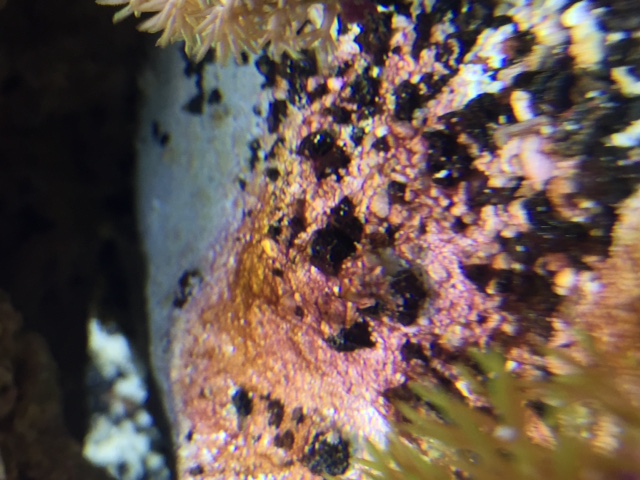 Red Algae in Marine Aquarium
Q. Ive been keeping saltwater fish for about five years, and
Red Algae in Marine Aquarium
Q. Ive been keeping saltwater fish for about five years, and
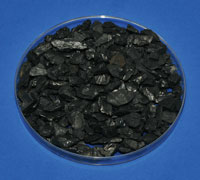 Aquarium Carbon
Whether it is for a small betta bowl, 6 million gallons
Aquarium Carbon
Whether it is for a small betta bowl, 6 million gallons
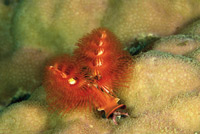 Aiptasia
Q. I have Aiptasia all over my aquarium and have been
Aiptasia
Q. I have Aiptasia all over my aquarium and have been
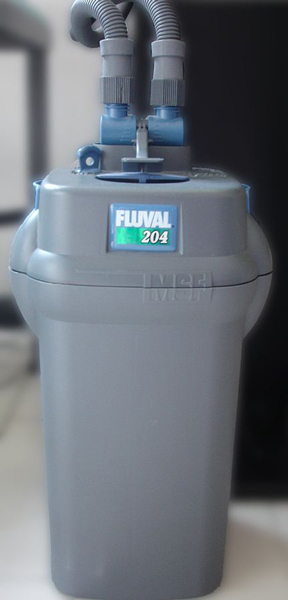 Canister Filters
In this article we will deal with a type of filter that many
Canister Filters
In this article we will deal with a type of filter that many
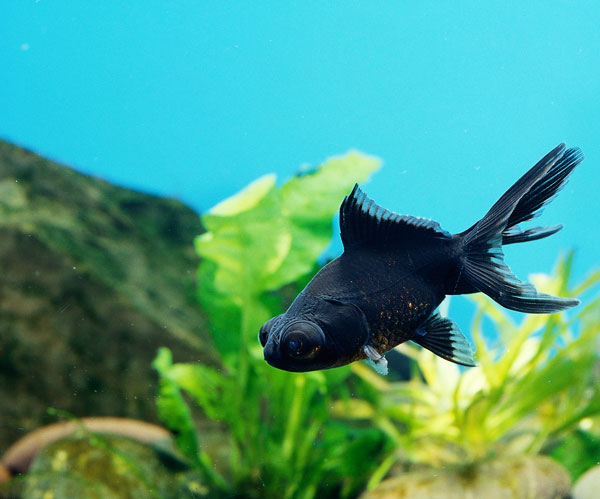 Fish and Fungus
Black Moor Q. I have two large black moor goldfish, one larg
Fish and Fungus
Black Moor Q. I have two large black moor goldfish, one larg
Copyright © 2005-2016 Pet Information All Rights Reserved
Contact us: www162date@outlook.com